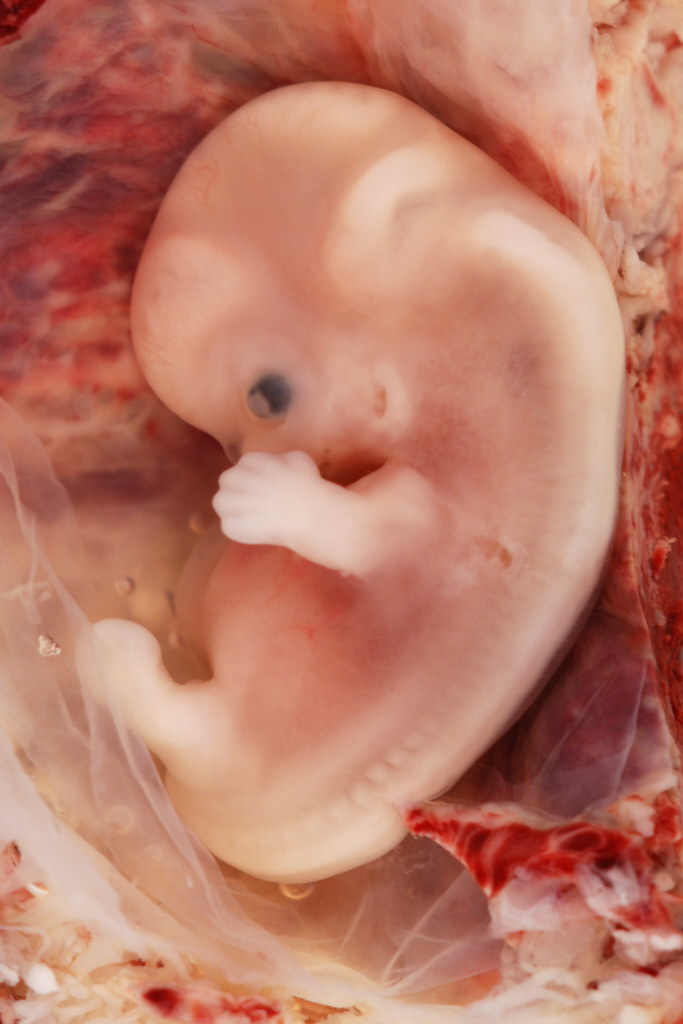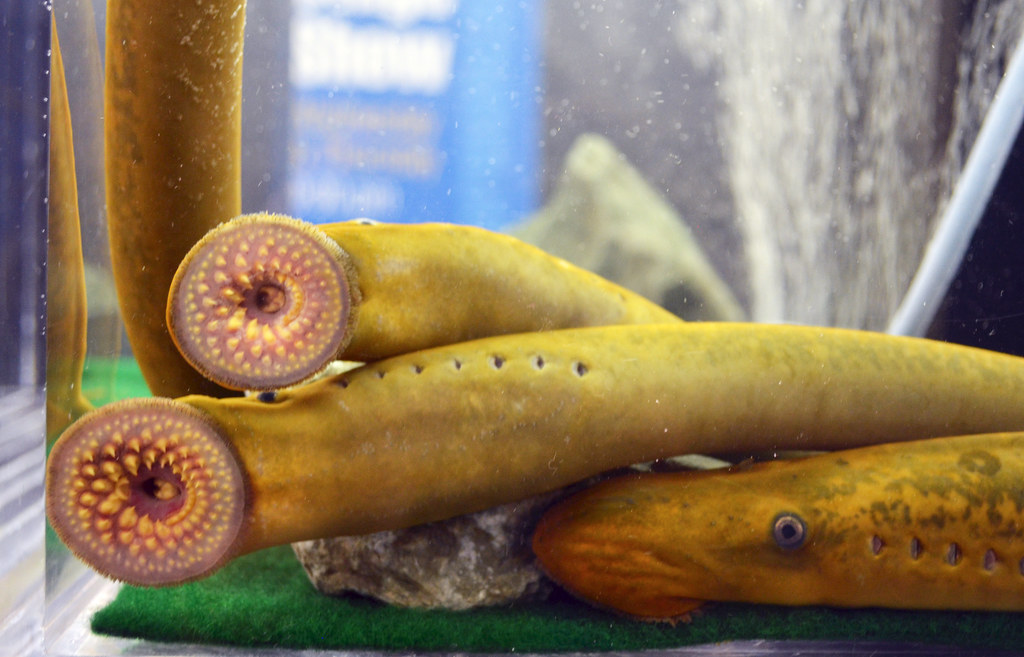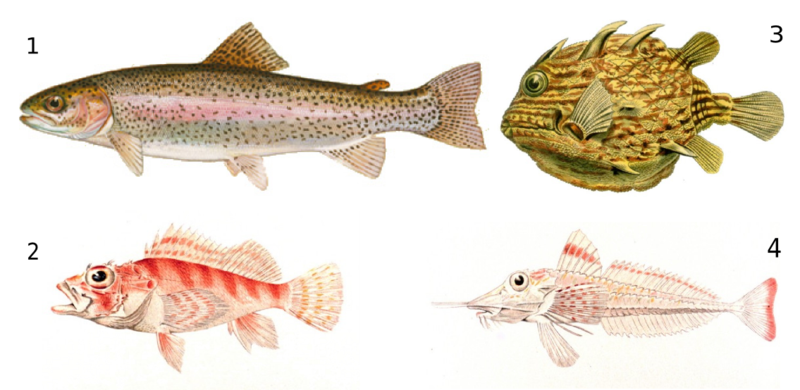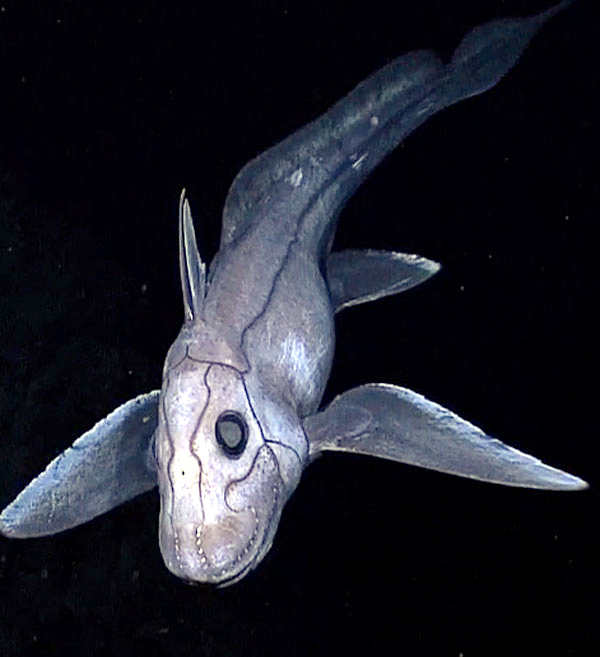Four diagnostic features characterize species in the phylum Chordata: 1) The notochord is a malleable rod running the length of the organism’s body, to which the rest of the skeletal structure relies upon for foundational support, 2) the presence of a tail extending past the anus, 3) a hollow, dorsal nerve cord (in humans this becomes the spinal chord!) and 4) pharyngeal gill slits, which have the ability to be modified for specialized functions in mature vertebrates. Though this might sound outlandish, since we are chordates, even all human fetuses early in development have gills!

There are many classes that comprise the phylum Chordata. These classifications and their relationships are constantly reassessed with taxonomic research and our continued development of our understanding of life on Earth. This chapter will focus primarily on the marine chordates.
Urochordata
The subphylum Urochordata includes the tunicates, otherwise known as ‘sea squirts’. They are exclusively found in marine environments and it seems strange that they are in the same category as vertebrates. Even more interesting is their manner of nutrient collection and waste expulsion. It is a rather simple system, there is an incoming siphon, that draws in water and food particulates that may be floating in the water. These nutrient particulates are then passed down to the intestine where they are processed for sustenance. The excess water and waste products are expelled through the other siphon known as the excurrent siphon. Even more surprising is the fact that these animals only show all traits of Chordates when they are in larval stage. Urochordata often occur in colonial form as adults as seen below.

Cephalochordata
The subphylum Cephalochordata (lancelets) exhibit all the traits of Chordata as adults. Like Urochordata, they are also marine organisms and may be found world wide in shallow waters. They are often observed in benthic environments, where they burrow themselves into the sediment but leave their anterior exposed as a foraging mechanism [1]. The anterior portion of these organisms resembles that of the face of shrimp or of a praying mantis. Their manner of feeding is through the filtration of nutrient rich waters around them. Cephalochordata have been described as ‘fishlike’ in comparison to their Urochordata counterparts. The species that comprise this subphylum are relatively small ranging from 5-15 cm in length. And though they possess a closed circulatory system, they have no heart. Instead, their blood is oxygenated via their gill slits and recycled throughout. Their dorsal nerve runs throughout their body, however the anterior end does not form a brain complex.

Agnatha
Moving into the vertebrate category, it is important to start off with the superclass Agnatha, more commonly known as the jawless fish. Two of the classes comprising Agnatha are Cyclostomata (lampreys) and Myxini (hagfishes). It is commonly accepted that the evolution of vertebrates began with the segmentation of a vertebral column. This gave rise to a ‘backbone’ [1]. This vertebral column typically incorporates and/or replaces the primitive notochord. Further vertebrate adaptations include the development of sensory organs, a complex neural system, and a brain encased in a skull. Vertebrate Chordates also exhibit bilateral symmetry, having a closed circulatory system with a chambered heart. The degree to which the heart is chambered (i.e. one, two, three and four chambered hearts), varies with taxonomic class.
Lampreys (Cyclostomata) are jawless fish that are parasitic on other fish. As juveniles they derive their nutrition from filter feeding on plankton and particles floating in fresh water. Lamprey juveniles wait until maturity to migrate into salt water environments. In the ocean, lampreys may often be observed attached to larger reef fish and megafauna. They press their mouth to their host and using a tongue, they draw blood and tissue out of their victims.

The Myxini Class are commonly known as hagfish and reside solely in marine environments. They are similar in structure to eels and are jawless. Myxini can be either consumers or detritivores, feeding on the flesh of weakened or already dead fish. They have also been known to prey upon small invertebrates. Just like the lamprey, hagfish tongues resemble a rasp, and are similar to serrations on a knife. One of the defense mechanisms exhibited by the Class Myxini resembles that of many amphibians in that when threatened, they will release mass amounts of high-viscosity fluids. These fluids help to distract, escape from, confuse or deter potential predators [1].

Osteichthyes and Chondrichthyes
Fish can be divided into the two main groups, Osteichthyes and Chondrichthyes. Osteichthyes, traditionally considered as an taxonomic class, is now known to be a paraphyletic group. As their name suggests, they are boney fish that dwell in both fresh water and salt water around the globe. Boney fish are comprised of a hard calcareous skeleton and are coated in slippery, sometimes sharp scales. An important feature of boney fish is their lateral line. This is a zone that runs horizontally along the body of the fish and is predominantly used in the detection of vibrations. The lateral line has been attributed to the coordinated and navigational success of schools of fish, in which mass quantities of individuals conglomerate for various reasons. There are currently over 34,000 known species of fish on the planet, and that number is both growing and shrinking [fishbase]. Many fish populations are threatened by egregious over-fishing practices which has caused species diversity and abundance in various ecosystems to move into a downward spiral.

The skeletons of Chondrichthyes are comprised of cartilage rather than bone. Cartilaginous fish include the Rays, Sharks and Chimaeras. The vast majority of sharks are predators, much of their power and deadliness comes from their evolutionary adaptations in their physiology. Their streamlined and highly muscular body lends to their high proficiency as consumers. The flattened bodies of rays contributes to their free-flowing nature through water. Often times rays consume invertebrates that are found in the benthos of the ocean, however they are highly diverse in size, morphology and behavior. Giant Manta Rays can get up to 7m in width and filter feed on masses of zooplankton, whereas the southern stingray may only be a few dozen centimeters in width and feed on the bottom in sandy flats near coral reefs [NOAA].

Chimaera
The Chimaera are an interesting group of organisms that inhabit the deep sea. Their physiology is atypical and they possess a cross of several characteristics as their name suggests. Rather than a jawline filled with teeth Chimaeras have a flat dental plate. Origins of Chimaeroid marine species can be traced back upwards to 280 million years, predating the earliest dinosaurs of the Triassic period.

A January 2017 discovery of a fossilized Dwykaselachus oosthuizeni skull showed that there are few structural differences in ancient Chimaeras compared to modern Chimaeras. CT scans of the fossil showed significant cranial nerves, inner-ear structure, and nostrils, which are all exhibited by modern Chimaeras [UChicago Medicine]. An incredible aspect of this would pertain to Earth’s projected geological history. The presence of modern-day Chimaeras with little difference from ancient species means that these organisms survived two mass extinction events, showing the perseverance of the beings that dwell in the ocean depths.

In Text Reference: 1. Peachey, Donna & Gordon, The Biocam Museum of Life Series. Kelowna, B.C. Canada VIY 7N8 Box 417 PBC, 2000
The information in this chapter in thanks to content contributions from Jason Charbonneau
